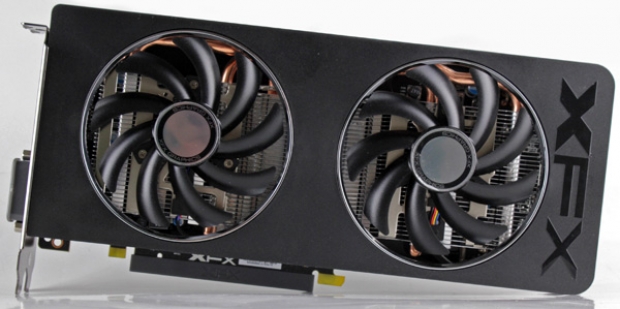Index
Double Dissipation Technology is XFX’s dual fan design that allows air to cool all the heatsinks and components, as well as the PCB board itself.
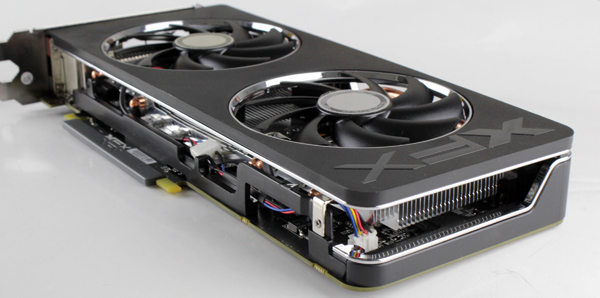
Both fans are connected at the same 4-pin connector on the PCB. Setting the RPM manually is a breeze using AMD’s Overdrive or other utilities like MSI Afterburner or PrecisionX.
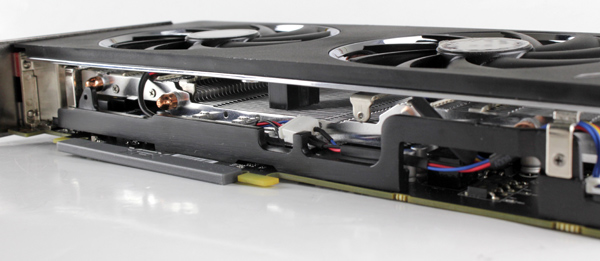
We tried to remove plastic hood without taking the whole cooler form the card but it cannot be done easily. This is possible only by voiding the warranty and removing the whole cooler from the card. However if you want to clean the fans and the heatsink, you can try to remove only the fans after undoing a few screws, as shown the next picture.
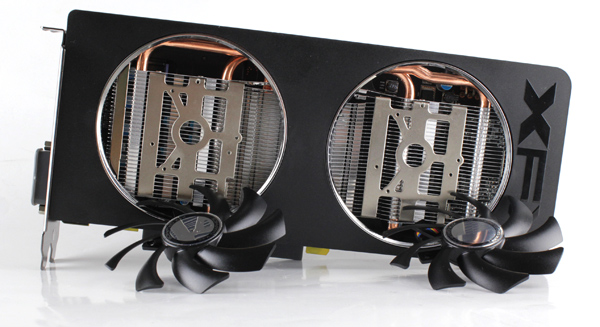
Two 8.5cm fans cool the heatsink which is one-piece design and stretches across the entire length of the card. Two 6mm heatpipes pass through the left side of the heatsink and other two pass through the right side of the heatsing. They are flattened right over the GPU, where they need to suck up as much heat as possible.
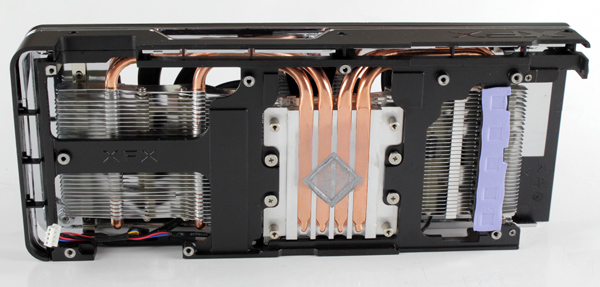
Once removed the plastic shroud looks like this. Its inner side is colored in silver. Note how the fans are not connected to the shroud but to the heatsink itself.
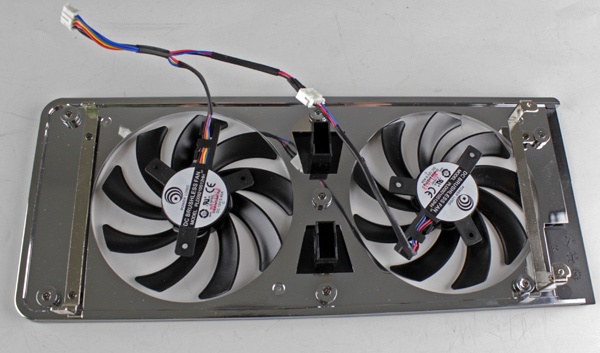
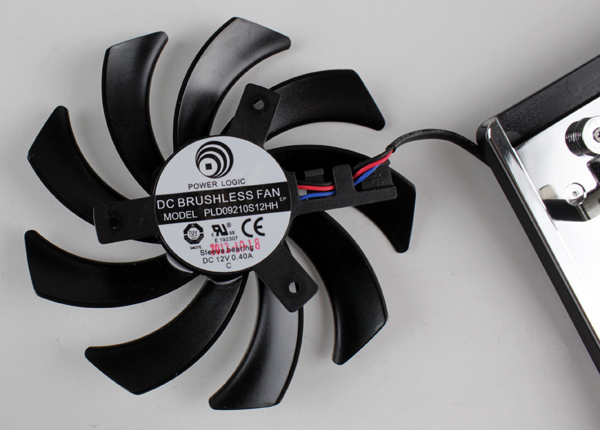
The heatsink is connected to the metal frame shown on the next picture. This frame serves as a heatspreader for the VRM.
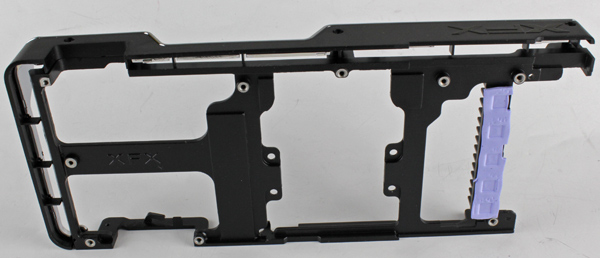
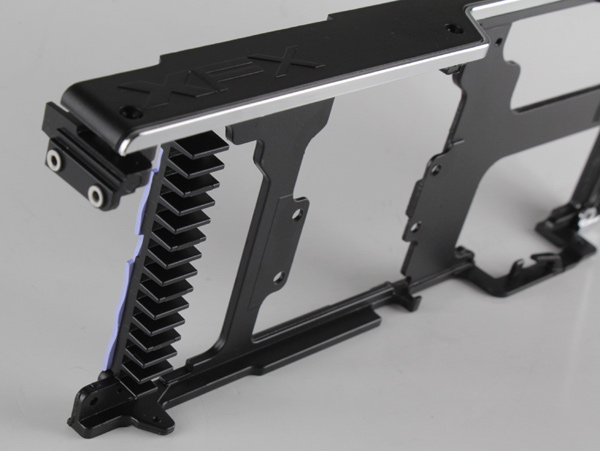
With all parts removed we finaly have a clear look at the heatsink.
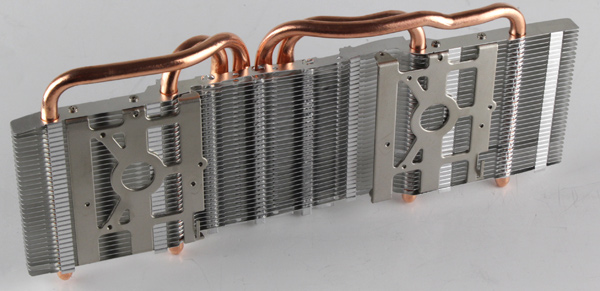
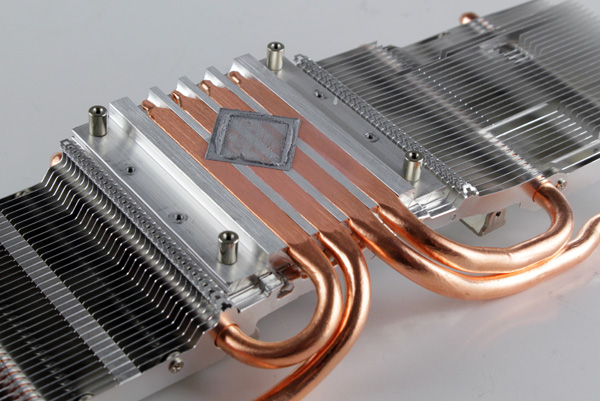
The memory chips are cooled only by air. XFX is using Elpida memory chips, model number H2032BBBG-6A-F. There are eight GDDR5 memory chips for a total of 2GB of memory and they are all installed on the top side of the PCB.
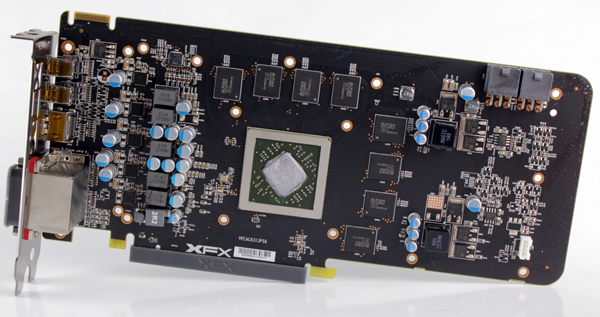
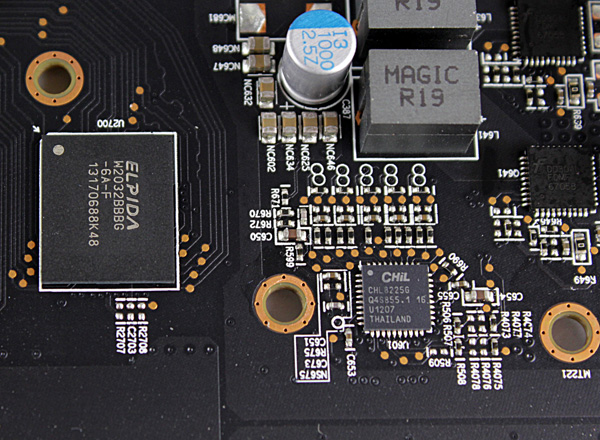
XFX uses a CHiL CHL8225G, which is a very common voltage controller that offers software voltage control and monitoring.

